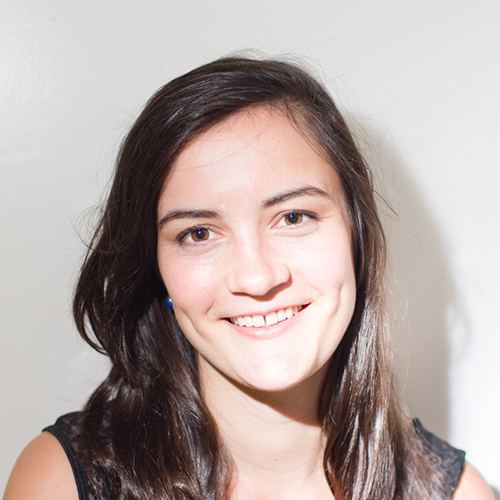The Hollywood Reporter published an opinion piece this week titled, “If Jennifer Lawrence Can’t Open A Movie, Who Can?” It received, as any halfway decent opinion piece does, some backlash from people listing off stars who successfully opened movies in the last year. Most of the responses hinged on people’s personal preference for Lawrence, which ultimately missed the larger point of Stephen Galloway's piece—that stars alone are what should be driving people to the box office. They aren't. But more on that in a sec.
To quickly review, Galloway waxes poetic about Lawrence and her mystical ability to be connect with audiences on a level higher than the movies they're in. Where a Gary Oldman sinks completely into a role, Lawrence and other actors of great charisma exist as both their characters and themselves. That's what makes them stars. “They’re the essence of what’s special in film,” Galloway writes. What’s most upsetting to him is that the star in profile, JLaw, has recently been behaving not like a star where it matters most: the box office. Her last three films, Mother!, Red Sparrow and Passengers were all flops. He blames this partly on the industry pushing “brands, rather than brand names, to the Star Wars and Marvel movies, rather than individual actors.” But while there has been an uptick in franchises over the past decade, there's a creeping shift away from super fandom over superstars and toward an interest and familiarity with behind-the-camera (and script) personalities.
Looking back on the buzziest movies of the past year—ones that were both critically acclaimed and very profitable—none was marketed based on star power. Get Out was the most profitable movie of 2017. The low-budget horror that premiered in January of that year had a 630% return on investment, while earning director and writer Jordan Peele an Academy Award for Best Original Screenplay. Although the cast included distinguished actors like Catherine Keener and Bradley Whitford, leading the film was relative newcomer and British actor Daniel Kaluuya. Allison Williams, who starred in HBO’s Girls as Marnie, played opposite Kaluuya in what was one of her first film roles. While the cast was brilliantly talented, they weren’t what sold the film. Along with the intriguing racial horror premise, people were excited about Peele’s directorial debut. In an interview with Vulture, the head of marketing at Universal, Michael Moses, made a point of noting how much of their strategy was built up behind Peele.
“You very rarely get to work on a movie where Jordan is on the cover of the New York Times, doing hip-hop stations, is on NPR, and everywhere in between,” Moses said. “It just showed the expanse of who this movie could be for.”
Lady Bird was another movie that generated considerable award nominations and excitement around the director. Again, a directorial debut, Lady Bird equally touted protagonist Saoirse Ronan and writer/director Greta Gerwig (previously known for her frequent acting collaborations with director Noah Baumbach). Glancing at a poster for the film, Ronan, who was nominated for Best Actress for her portrayal of 17-year-old Lady Bird, isn't advertised anymore than anyone else appearing in the film. Her name literally appears in the same font and size as the rest of the cast listed on the poster. Looking at this poster, Ronan's popularity (she'd been previously nominated for Best Actress for Brooklyn the year before) isn't the film's selling point.
Studios are adding elements beyond name recognition to their marketing arsenals. If last year's biggest cinematic successes tell us anything, it's that star power isn't the only driving force for audiences. Black Panther and Wrinkle In Time are the two top movies at the box office this week, and while both have huge names attached to them, much of the narrative around each film's production and release revolve more around the cultural implications of having two black-directed films with diverse casts. Multiple campaigns were set up to screen both films to underprivileged kids, which speaks to the wider significance of the movies, and not just that Oprah is in one of them.
Marketing for Wrinkle In Time sold the film as Ava DuVernay's adaptation of Madeleine L'engle's classic children's book, and the press seized on the fact that DuVernay is the first black woman to direct a film with this large a budget. In fact it's difficult to find press leading up to the film that didn’t mention that latter fact.
Instagram and Twitter gives us a peek into the people and happenings behind the screen. Not only do we get to watch DuVernay’s work in the theater, we get to follow along with her processes and thoughts on her social accounts. Anyone who follows her on Instagram is privy to her (nicely) accosting someone on set and having them explain their position and how they contribute to the movie making process. From lighting grips to special effect editors, DuVernay’s Insta stories exposed the team that goes into making our favorite stars look great and our favorite stories come to life.
Similarly, The Big Sick writer Kumail Nanjiani’s and Moonlight director Barry Jenkins's Twitter activity allows us to experience their excitement surrounding their work in more off-the-cuff ways than a formal interview would. Our increasing intimacy with the minds behind the screen is helping us see the forest for the trees. It’s growing our investment in these films beyond the leading actors and actresses.
There were, of course, celebrated stars this year. Tiffany Haddish, Timothee Chalamet, Gal Gadot, to name a few. But all three appear to have been catapulted to success as a result of their movies, not the other way around. These newly minted stars' films were the first time audiences were exposed to what Galloway refers to as each star’s “mysterious alchemy.” While the actors were certainly assets to the films, audiences came to the theater for the movies themselves first and foremost, and only after that were these stars born. People craved the all-black lineups of Black Panther and Girls Trip, both of which vastly outperformed expectations at the box office. Female-directed films like Lady Bird, Wrinkle In Time, and Wonder Woman aren’t just fulfilling diversity quotas, but proving for once and for all that huge audiences want more of these films than they've been given. Patty Jenkins was the first female to direct a superhero movie, which, again, was a big narrative leading up the film's release. In a year as chaotic as 2017, where individual celebrity overshadowed the usual nourishment of coherent narrative in the public sphere, audiences turned to films that provided that. They also turned to films that emphasized (however subtly) diversity—which, by nature, requires more than one big star—and did so in record numbers. What we weren't getting in, oh say, politics, we could find in successful films. 2018 looks much the same.
The movie star, as a concept, will never go away. We’re already witnessing the glorification of young Timothée Chalamet, who is surely talented. But isn’t it refreshing to center the storytellers and visionaries who help give these stars their platform? Isn’t it gratifying recognizing the talent of full teams working together to create a story greater than the sum of its parts?






